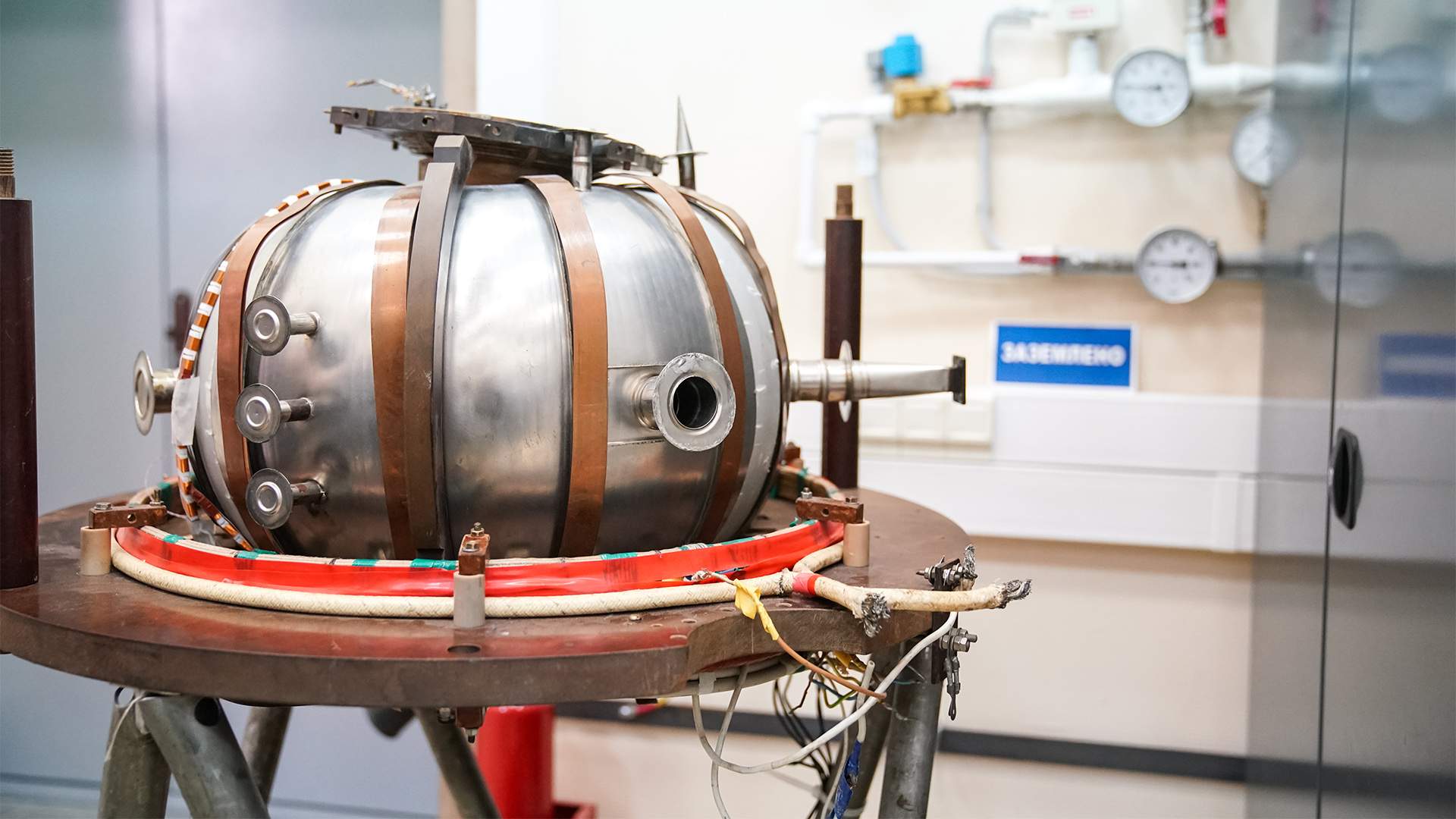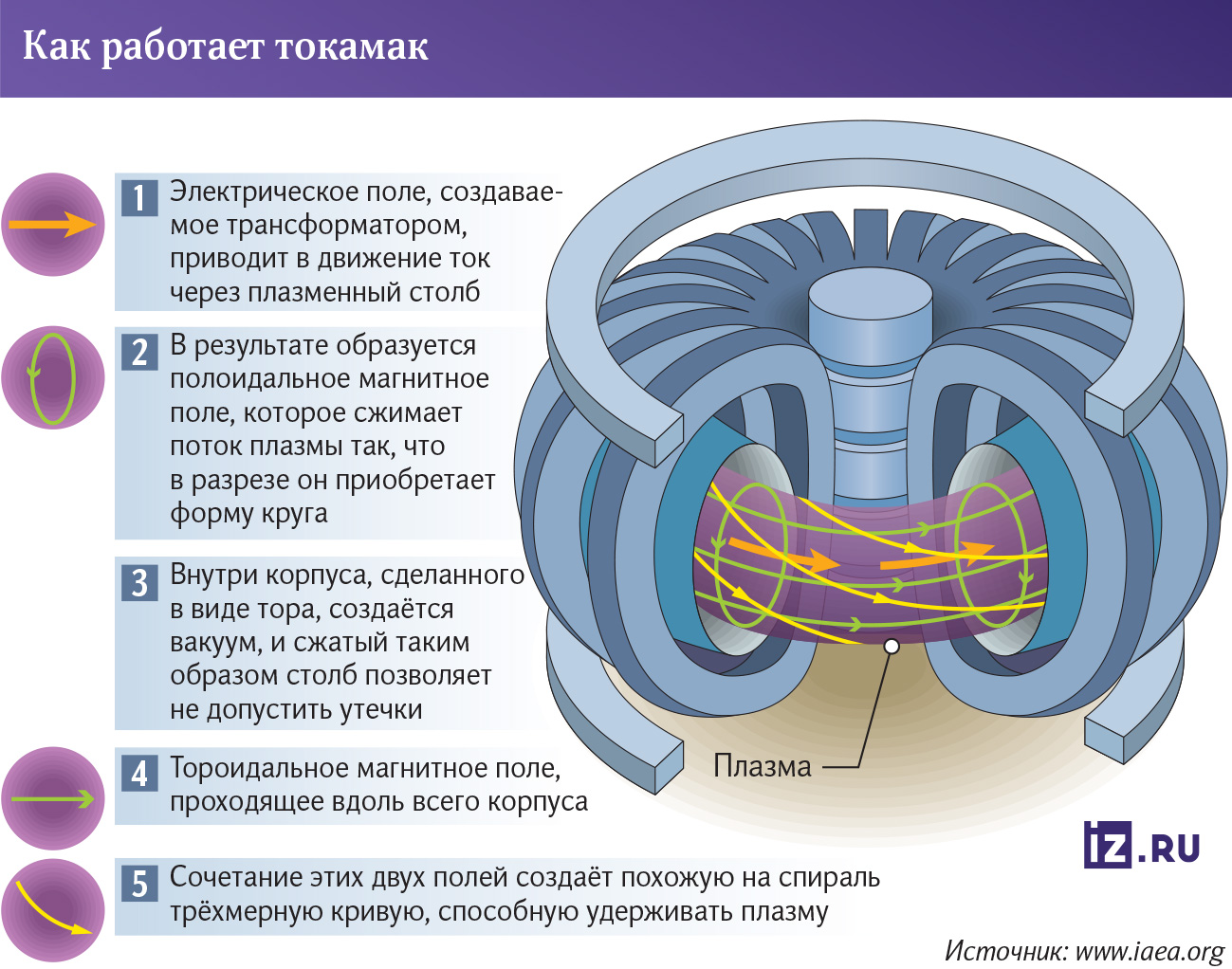Strong stuff: remote thermonuclear reactor launched in Russia

The Russian Federation has physically launched the first educational tokamak in the post-Soviet space - a facility for holding high-temperature plasma by magnetic fields. The complex is connected to the infrastructure that allows conducting experiments and obtaining results remotely. This enables a wide range of scientists, students, and teachers to become participants in thermonuclear research. The tokamak will also be used to work out technologies that can be applied to create similar reactors of the next generation.
How the thermonuclear experiment was conducted
On November 18, the National Research Nuclear University MEPhI (Rosatom's core university) hosted the physical launch of the first university tokamak in Russia and the entire post-Soviet space. This is an installation in which high-temperature plasma is held by magnetic fields. The research complex was named "Mifist".
The symbolic button to start the tokamak was activated by Alexei Likhachev, Director General of Rosatom State Atomic Energy Corporation, and Vladimir Shevchenko, Rector of MEPhI. During the launch, specialists received a plasma with a temperature of about 500 thousand degrees, which was held for 20 milliseconds.
The event launched the Remote Participation Center, an infrastructure and hardware platform connected to the tokamak that allows remote participation in thermonuclear experiments. The goal of this complex is to provide access to work with the facility to a wide range of research organizations. This includes students, postgraduates, teachers and scientists from domestic and foreign institutions of higher education.
- The training tokamak is not designed to produce record-breaking parameters. It is structurally simple and does not require a large maintenance infrastructure. At the same time, the importance of the installation is that hundreds of young specialists have practiced on it and mastered not only theoretical but also practical competencies of working with high-temperature plasma," Stepan Krat, senior researcher of the laboratory of physical and chemical processes of the Institute of Laser and Plasma Technologies ("LaPlaz") of MEPhI National Research Nuclear University, told Izvestia.
He reported that the outer radius of "Mifist" is only 25 cm, and the design radius of the ring of plasma to be produced at this facility is about 13 cm. At the same time, despite its miniature size, the facility allows to work out all the modes that will later be implemented on large tokamaks.
What technologies will be practiced on the training tokamak
In the near future, with the help of "Mifist" researchers will test new Russian equipment for measuring plasma density, test new technologies for heating plasma and maintaining its aggregate state, as well as study the effects that arise in its interaction with solid surfaces, explained Stepan Krat.
In addition, the training tokamak will be used to work out technologies for serial production of this type of installations.
"Scientists all over the world are actively studying the possibilities of controlled thermonuclear fusion for peaceful purposes, since this reaction can produce energy that exceeds the resources spent on it. Such technologies can give mankind a fundamentally powerful source of cheap energy," Alexei Likhachev noted in his speech during the launch of the training tokamak.
According to the head, Russian specialists are among the leaders in this field. In particular, as part of the creation of the ITER complex - the international thermonuclear experimental reactor - domestic scientists and engineers are entrusted with the production of 25 unique systems.
"As of today, a number of educational programs are already connected to our thermonuclear space. In the future, this will make it possible to ensure a stable inflow of personnel into this research," said Anatoly Krasilnikov, director of the ITER Center of Rosatom State Corporation.
He noted that the proposed information and communication approach will also be actively used by researchers in the design of a new-generation fusion plant - tokamak with reactor technologies (TRT), which is planned to be built by 2030 on the basis of the Troitsk Institute for Innovative and Thermonuclear Research (TRINITI).
According to the specialist, the tokamak launch was part of the federal project "Development of controlled thermonuclear fusion technologies and innovative plasma technologies" of the comprehensive program "Development of equipment, technologies and scientific research in the field of atomic energy use in the Russian Federation".
"Among other things, the uniqueness of Mifist is that it was created by the hands of students. Scientists who operate devices not created by them often do not understand how these machines work. This sometimes leads to improper experiment planning or incorrect conclusions. Therefore, it is important to cultivate a class of scientists who, in the course of developing and building complex machines from scratch, master the principles of their operation perfectly," says Vladimir Shevchenko, Rector of MEPhI National Research Nuclear University.
In the future, he noted, the developers of such complex machines will be not just service personnel, but really researchers with a capital letter, creators of new solutions and technologies.

Переведено сервисом «Яндекс Переводчик»




